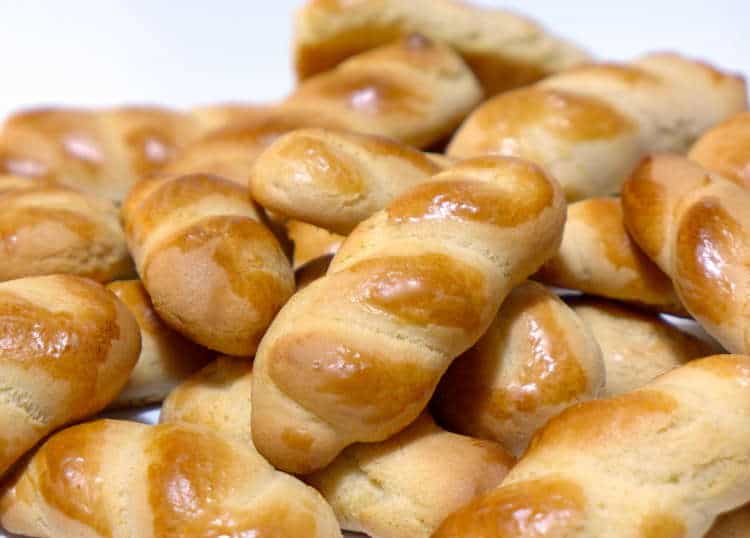Hello ladies and gents this is the viking telling you that today we are talking about

GREEK CUISINE

Greek cuisine is a Mediterranean cuisine. Greek cookery makes wide use of vegetables, olive oil, grains, fish, wine (white and red), and meat (including pork, poultry, veal, lamb, rabbit and beef). Other important ingredients include olives, pasta (especially hilopites, a kind of pasta similar to tagliatelle), cheese, lemon juice, herbs, bread, and yogurt.
The most commonly used grain is wheat; barley is also used. Common dessert ingredients include nuts, honey, fruits, and filo pastries. It has a history of thousands of years with dishes originating from Ancient Greece, continuing into the Byzantine period and surviving until today. It has been influenced by Middle Eastern, Ottoman, and Italian cuisine and cuisines from the northern countries while also having exerted influence over these same areas throughout the years.
KOULOURAKIA RECIPE (GREEK EASTER COOKIES)
Description
The fluffiest and crunchiest traditional Greek Easter cookies recipe (koulourakia) you have ever made! These sweet little Greek Easter cookies are super quick to bake, so much fun to make and highly addictive to eat! Discover how to bake them to perfection with this traditional Greek recipe.
Ingredients
- 250g butter (8.8 oz.)
- 1 1/2 cup sugar
- 25g powdered baking ammonia (1 and a half tbsps)
- 1/2 cup lukewarm milk
- 4 medium eggs
- 1 tbsp vanilla extract
- zest of 2 oranges
- 1kg all-purpose flour (35 oz.)
- 2 egg yolks and 1 tbsp water for glazing the koulourakia
Instructions
- To prepare this traditional koulourakia recipe, start by mixing the butter and sugar. In a mixer’s bowl add the sugar and butter (chopped) and mix for about 10-15 minutes, until the butter is creamy and fluffy. (Once starting to prepare this koulourakia recipe, make sure that the butter is at room temperature).
- In the meantime warm the milk until lukewarm and remove the pot from the heat. Add the ammonia and blend until dissolved. Set aside.
- Add the eggs (in the butter-sugar) mixture one at a time, whilst mixing, allowing time for each one to be absorbed, before adding another. Pour in the the vanilla extract, the orange zest and milk (with the ammonia) and mix to combine. Add the flour, a little bit at a time, whilst mixing, until the ingredients are combined and the dough is soft and not too sticky.
- Cover the dough for the koulourakia with some plastic wrap and set aside to rest for 20 minutes.
- Place the dough for the koulourakia on a clean working surface, take a small piece of dough and form long cords. Shape the koulourakia with your hands, giving them any shape you like. Line a large baking tray with parchment paper and place the koulourakia, leaving some distance between them as they will rise a lot when baked. (For this koulourakia recipe, you will need approx. 4-5 large baking trays, depending on the size of the cookies)
- In a small bowl add the egg yolks and 1 tbsp water and whisk with a fork. Brush the top of the koulourakia and bake in preheated oven at 200C for 15 minutes, until nicely coloured.
- Let the koulourakia cool down completely and store in airtight containers for up to three weeks.
Comments
Post a Comment